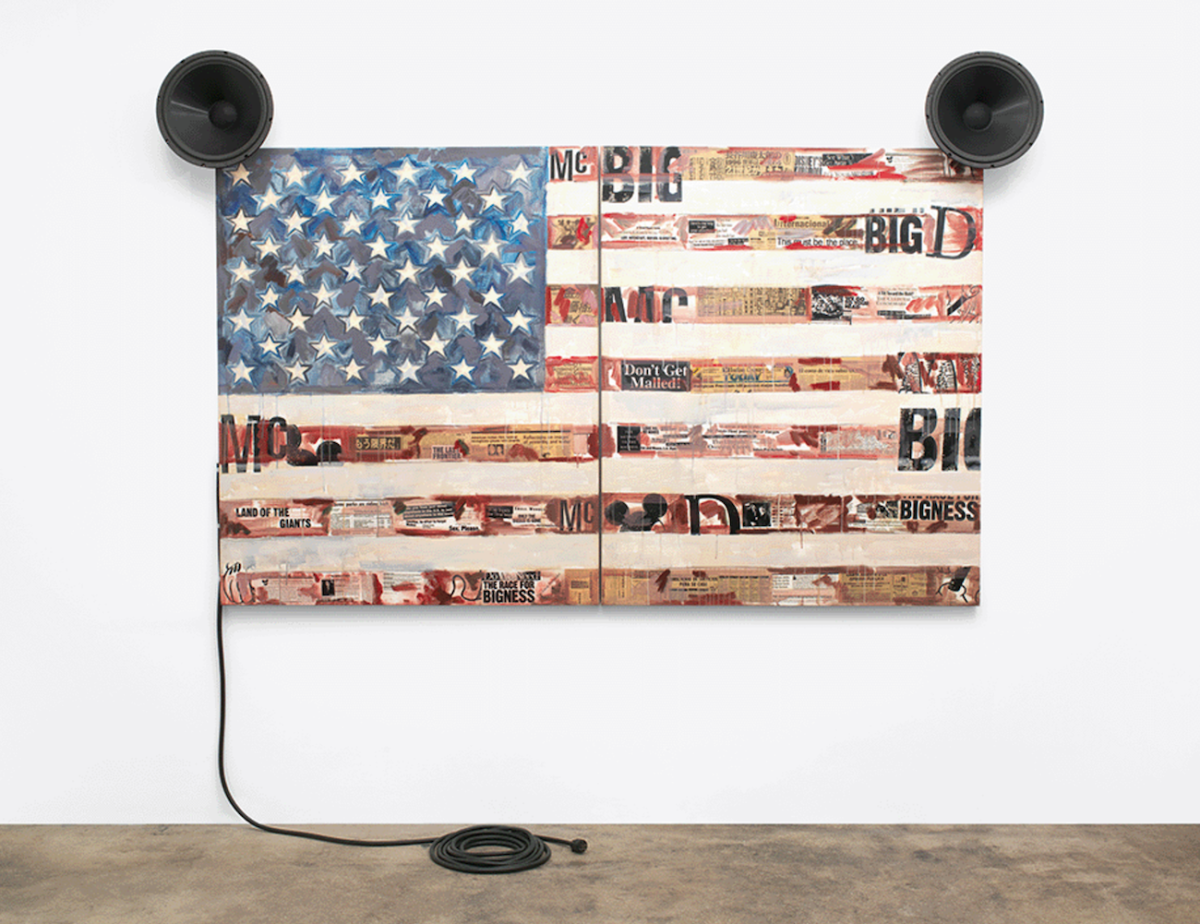Memory Map Smartphone Tour: McFlag

In McFlag (1996), Jaune Quick-to-See Smith critiques the commercialization of American nationalism by creating a US flag that directly connects the national symbol with corporate branding and advertising. Composed of oil, paper, and newspaper, Smith affixes speakers to the canvas to mimic the dish-like ears of Disney’s iconic mascot Mickey Mouse, and co-opts the ‘big, bigger, biggest’ language of McDonald’s slogans, to humorously depict the US government as being under the control of multinational corporations.
Many artists whose work influenced Smith’s—including Jasper Johns and David Hammons—have also taken liberties with the representation of the American flag. Here, however, Smith’s use is explicitly anti-capitalist. Artist Marie Watt reflects on McFlag as part of the free smartphone tour of Jaune Quick-to-See Smith: Memory Map at SAM, perceiving the work as a rebuke to powerful empires. All 19 stops of the exhibition’s audio tour are accessible by scanning the QR code next to select artworks on view in SAM’s galleries or by visiting our SoundCloud. Memory Map closes this Sunday, May 12, so don’t miss out—reserve your tickets to see the exhibition before it’s gone.
McFlag, 1996
NARRATOR: Smith titled this work McFlag and gave the canvas “ears” made of speakers that resemble Mickey Mouse’s ears. She layers brand identities like McDonald’s and Disney over the American flag, and suggests that American commercialism and American nationalism have become inseparable.
MARIE WATT: I am Marie Watt, and I am an artist and member of the Seneca Nation of Indians.
I think that one of the things that Jaune Quick-to-See Smith does in this painting is she really does call upon us to think about these different constructs of empire, whether it’s nationhood or the entertainment industry. I am very much aware is when you zoom into this image and you start looking at the collage elements that have washes of paint over them, how there’s phrases like “the last frontier,” and “spirits are rich,” and “prices are low” and “big business,” and it’s interesting to reflect on the relationship between consumerism and stereotypes, between consumerism and colonization, and even consumerism and environmental degradation. And so this piece on one hand, I think is playful and funny, and yet, it also sort of looks at this darker side of empires.
– Lily Hansen, SAM Marketing Content Creator
Photo: McFlag, 1996, Jaune Quick-to-See Smith, oil, paper, and newspaper on canvas with speakers and electrical cord, three parts: 60 × 100 in. overall, Tia Collection. Fabricated by Neal Ambrose-Smith, © Jaune Quick-to-See Smith, Photograph courtesy the artist and Garth Greenan Gallery, New York.